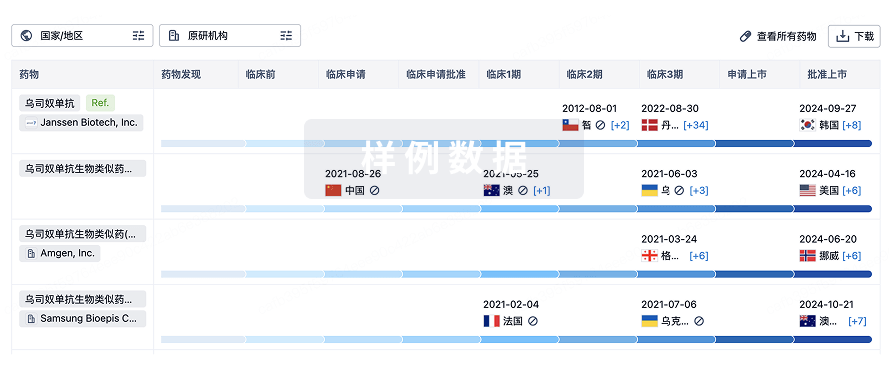预约演示
更新于:2025-08-23
SAAP-148
更新于:2025-08-23
概要
基本信息
非在研机构- |
权益机构- |
最高研发阶段临床前 |
首次获批日期- |
最高研发阶段(中国)- |
特殊审评- |
关联
100 项与 SAAP-148 相关的临床结果
登录后查看更多信息
100 项与 SAAP-148 相关的转化医学
登录后查看更多信息
100 项与 SAAP-148 相关的专利(医药)
登录后查看更多信息
29
项与 SAAP-148 相关的文献(医药)2025-03-04·JAC-Antimicrobial Resistance
SAAP-148 and halicin exhibit synergistic antimicrobial activity against antimicrobial-resistant bacteria in skin but not airway epithelial culture models
Article
作者: Nibbering, Peter H ; Dorin, Julia R ; Lennard, Patrick R ; Hiemstra, Pieter S
Abstract:
Background:
The escalating global threat of antimicrobial resistance (AMR) necessitates the development of novel antimicrobial agents, innovative strategies, and representative infection models to combat AMR bacterial infections. Host defence peptides (HDPs) and their derivatives have been proposed as complements to conventional antibiotics due to their antibacterial activity and modulation of the immune response.
Objectives:
This study investigated the novel use of the HDP-derived synthetic antibacterial and anti-biofilm peptide (SAAP)-148 as a pretreatment in epithelial tissue models to prevent colonization by AMR bacteria. The combined activities of SAAP-148 pretreatment with post-infection halicin to treat infections were also explored.
Methods:
Employing cultured human skin equivalents (HSEs) and primary bronchial epithelial cells (PBECs) as models of tissue infection, we examined the prophylactic and therapeutic effects of SAAP-148, both singularly and in combination with the repurposed antibiotic halicin, against AMR bacteria. We additionally interrogated the response of HSE and PBEC cultures to SAAP-148 treatment via confocal microscopy and quantitative PCR of native HDPs and inflammatory cytokine genes.
Results:
Our findings demonstrated that pretreatment with SAAP-148 significantly reduces colonization of HSEs and PBECs by AMR Staphylococcus aureus and Pseudomonas aeruginosa. Confocal microscopy revealed differential uptake and localization of SAAP-148 in these tissues, correlating with its distinct activity in these tissues. SAAP-148 exposure temporarily increased expression of the HDPs cathelicidin (CAMP) and β-defensin 1 (DEFB1), and the cytokine IL-8 (CXCL8), which did not correlate with the transient antibacterial activity observed. Sequential treatment with SAAP-148 prior to infection with AMR S. aureus and post-infection halicin treatment demonstrated synergistic activity in HSEs, whereas this combined activity was indifferent in PBEC cultures.
Conclusions:
These results support SAAP-148 as a candidate for pre-infection prophylaxis and synergistic antibiotic therapy with halicin in skin, broadening the potential of both agents to address AMR bacterial infection.
2025-02-27·JOURNAL OF MEDICINAL CHEMISTRY
Peptide Double-Stapling and Arginine N-Glycosylation Triggered the Development of Therapeutic Antimicrobial Peptides Capable of Killing Drug-Resistant Bacteria in Mice
Article
作者: Hu, Honggang ; Li, Yulei ; Li, Xiang ; Song, Nannan ; Xue, Jingwen ; Fu, Yinxue ; Yan, Fang ; Lu, Zhiyuan ; Ding, Yanjiao ; Cong, Wei
Antimicrobial peptides SAAP-148 exhibited excellent antimicrobial activities but suffered from inherent disadvantages, including cytotoxicity and poor proteolytic stability. Herein, we developed a novel strategy combining one unique silver-catalyzed solid-phase glycosylation-enabled arginine N-glycosylation strategy and all-hydrocarbon peptide double-stapling, and five-round peptide libraries were rationally constructed containing over 50 stapled and/or arginine N-glycosylated peptides. SLP-51 consisting of two introduced all-hydrocarbon staples and the C-terminal arginine glycosylation exhibited superior in vitro antimicrobial activities against drug-resistant Gram-positive or -negative clinical isolates. SLP-51 also exhibited improved proteolytic stability than the parent peptide SLP-0, and importantly, significantly weakened hemolysis. Experimental and modeling mechanism research indicated that SLP-51 exerted similar but stronger killing abilities by destroying the integrality of the bacterial membranes. In both skin wound and drug-resistant bacterial pneumonia models, SLP-51 showcased a potent therapeutic effect in treating both MRSA and Klebsiella pneumoniae infection in vivo and dramatical improvement of inflammatory injury.
2024-04-01·Probiotics and antimicrobial proteins
Novel Antimicrobial Peptide SAAP Mutant as a Better Adjuvant to Sulbactam-Based Treatments Against Clinical Strains of XDR Acinetobacter baumannii
Article
作者: Naha, Aniket ; Ramaiah, Sudha
The production of extended spectrum β-lactamases (ESBLs) in extensively drug-resistant (XDR) strains of Acinetobacter baumannii has created havoc amongst clinicians making the treatment procedure challenging. Carbapenem-resistant strains have displayed total ineffectiveness towards newer combinations of β-lactam-β-lactamase inhibitors (βL-βLI) in tertiary healthcare settings. Therefore, the present study was aimed to design potential β-lactamase antimicrobial peptide (AMP) inhibitors against ESBLs produced by the strains. We have constructed an AMP mutant library with higher antimicrobial efficacy (range: ~ 15 to 27%) than their parent peptides. The mutants were thoroughly screened based on different physicochemical and immunogenic properties revealing three peptides, namely SAAP-148, HFIAP-1, myticalin-C6 and their mutants with safe pharmacokinetics profile. Molecular docking highlighted SAAP-148_M15 displaying maximum inhibitory potential with lowest binding energies against NDM1 (- 1148.7 kcal/mol), followed by OXA23 (- 1032.5 kcal/mol) and OXA58 (- 925.3 kcal/mol). The intermolecular interaction profiles displayed SAAP-148_M15 exhibiting hydrogen bonds and van der Waals hydrophobic interactions with the crucial residues of metallo β-lactamase [IPR001279] and penicillin-binding transpeptidase [IPR001460] domains. Coarse-grained clustering and molecular dynamics simulations (MDS) further validated the stable backbone profile and minimal residue-level fluctuations of the protein-peptide complex that were maintained throughout the simulation timeframe. The present study hypothesised that the combination of sulbactam (βL) with SAAP-148_M15 (βLI) holds immense potential in inhibiting the ESBLs alongside restoration of sulbactam activity. The current in silico findings upon further experimental validations can pave path towards designing of successful therapeutic strategy against XDR strains of A. baumannii.
100 项与 SAAP-148 相关的药物交易
登录后查看更多信息
研发状态
10 条进展最快的记录, 后查看更多信息
登录
| 适应症 | 最高研发状态 | 国家/地区 | 公司 | 日期 |
|---|---|---|---|---|
| 细菌感染 | 临床前 | 荷兰 | 2018-01-10 | |
| 细菌感染 | 临床前 | 荷兰 | 2018-01-10 |
登录后查看更多信息
临床结果
临床结果
适应症
分期
评价
查看全部结果
| 研究 | 分期 | 人群特征 | 评价人数 | 分组 | 结果 | 评价 | 发布日期 |
|---|
No Data | |||||||
登录后查看更多信息
转化医学
使用我们的转化医学数据加速您的研究。
登录
或

药物交易
使用我们的药物交易数据加速您的研究。
登录
或

核心专利
使用我们的核心专利数据促进您的研究。
登录
或

临床分析
紧跟全球注册中心的最新临床试验。
登录
或

批准
利用最新的监管批准信息加速您的研究。
登录
或

生物类似药
生物类似药在不同国家/地区的竞争态势。请注意临床1/2期并入临床2期,临床2/3期并入临床3期
登录
或

特殊审评
只需点击几下即可了解关键药物信息。
登录
或

生物医药百科问答
全新生物医药AI Agent 覆盖科研全链路,让突破性发现快人一步
立即开始免费试用!
智慧芽新药情报库是智慧芽专为生命科学人士构建的基于AI的创新药情报平台,助您全方位提升您的研发与决策效率。
立即开始数据试用!
智慧芽新药库数据也通过智慧芽数据服务平台,以API或者数据包形式对外开放,助您更加充分利用智慧芽新药情报信息。
生物序列数据库
生物药研发创新
免费使用
化学结构数据库
小分子化药研发创新
免费使用


